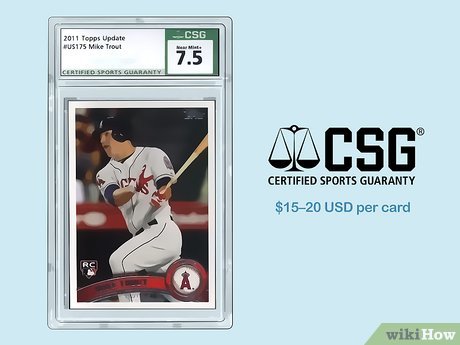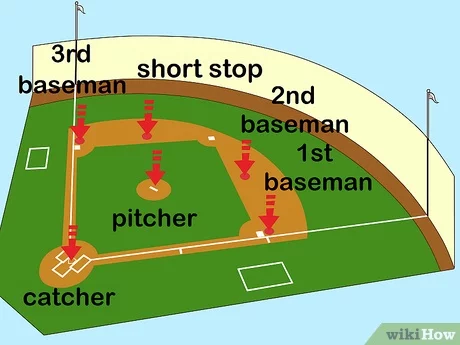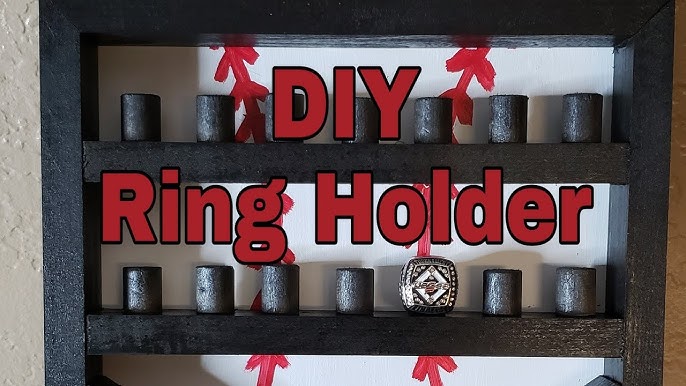Grading baseball cards can seem confusing. It’s a crucial step for collectors.
Understanding how to get baseball cards graded is essential for any serious collector. The process increases the value of your cards and ensures their authenticity. Grading involves sending your cards to a professional service, where experts evaluate their condition. This can boost their market price.
Whether you’re looking to sell or just want to know the worth of your collection, grading is a must. In this guide, you’ll learn the steps to get your baseball cards graded. It’s simpler than you think. Let’s dive into the details so you can start enhancing your collection today.
Introduction To Baseball Card Grading
Baseball card grading is a crucial aspect of collecting. It helps determine the value and condition of your cards. Understanding the grading process can help maximize your collection’s worth. This section will provide an introduction to baseball card grading and why it is important.
Importance Of Grading
Grading is essential for several reasons. First, it establishes the condition of a card. This involves evaluating various aspects, including corners, edges, surface, and centering. Second, it provides an objective assessment of the card’s quality. Professional graders use a standardized scale to rate cards.
Third, grading ensures authenticity. It verifies that the card is not counterfeit. Finally, grading can increase the market value of a card. Buyers are willing to pay more for graded cards.
Grading Benefits
There are several benefits to grading your baseball cards. Below is a table summarizing the key benefits:
| Benefit | Description |
|---|---|
| Condition Verification | Ensures the card is in the stated condition. |
| Increased Value | Graded cards often sell for higher prices. |
| Authentication | Confirms the card is genuine and not a fake. |
| Buyer Confidence | Graded cards give buyers more assurance. |
Grading offers peace of mind. Knowing your card is protected and authenticated is valuable. It also helps in insurance claims. In case of loss or damage, a graded card has a documented value.
- Certified Condition: Grading provides a certified condition report.
- Market Trust: Buyers trust professionally graded cards.
- Easy Comparison: Easier to compare graded cards with others.
These benefits make grading a worthwhile investment. It enhances the overall collecting experience. Whether you are a seasoned collector or a newcomer, grading is a must.

Credit: www.amazon.com
Choosing A Grading Service
Choosing a grading service is a crucial step for baseball card enthusiasts. A proper grading service can increase the value and authenticity of your cards. This section will guide you through the process of selecting the best service for your needs.
Top Grading Companies
Several companies specialize in grading baseball cards. The most popular ones are PSA, Beckett, and SGC. PSA (Professional Sports Authenticator) is known for its reliable and consistent grading. Beckett Grading Services (BGS) offers a detailed sub-grading system. SGC (Sportscard Guaranty) is appreciated for its fast turnaround times.
Factors To Consider
When choosing a grading service, consider the company’s reputation. Look at customer reviews and feedback. Check the grading scale and criteria they use. Some collectors prefer a more detailed grading system. Consider the cost of grading as well. Prices can vary significantly between companies. Turnaround time is another important factor. Some services take longer to grade cards. Make sure to choose a service that fits your timeline.
Preparing Cards For Submission
Getting baseball cards graded can be an exciting process. Proper preparation is essential for the best results. This section will guide you through cleaning your cards and proper card packaging.
Cleaning Your Cards
Before submitting your baseball cards, ensure they are clean. Use a soft cloth to gently wipe the surface. This removes dust and fingerprints. Avoid using any liquids or harsh chemicals. They can damage the card. Be gentle to prevent bending or scratching the card. Clean cards make a better impression during grading.
Proper Card Packaging
Proper packaging protects your cards during transit. Use a penny sleeve for each card. This provides a basic layer of protection. Place the sleeved card into a top loader. This adds rigidity and further protection. Use a team bag to hold multiple cards together. Secure the cards in a padded envelope or a small box. Add bubble wrap or packing peanuts to prevent movement. Label the package clearly to avoid mishandling.
Understanding The Grading Scale
Grading baseball cards is essential for determining their value. The grading scale helps collectors understand a card’s condition. This guide explains the grading scale in detail.
Grading Criteria
Various factors influence the grade of a baseball card. Here are the key criteria:
- Centering: How well the card’s image is centered.
- Edges: Condition of the card’s edges.
- Corners: Sharpness of the card’s corners.
- Surface: Presence of any scratches, stains, or print defects.
Grades Explained
The grading scale ranges from 1 to 10. Each grade reflects the card’s condition.
| Grade | Description |
|---|---|
| 10 | Gem Mint: Perfect condition. |
| 9 | Mint: Nearly perfect with minor flaws. |
| 8 | Near Mint/Mint: Slight wear visible. |
| 7 | Near Mint: Small imperfections. |
| 6 | Excellent/Mint: Minor wear and tear. |
| 5 | Excellent: Noticeable wear. |
| 4 | Very Good/Excellent: More significant wear. |
| 3 | Very Good: Obvious defects. |
| 2 | Good: Major defects. |
| 1 | Poor: Extensive damage. |
Understanding these grades helps you better assess your baseball cards’ value. Ensure you get accurate grades to maintain the integrity of your collection.
Submitting Your Cards
Submitting your baseball cards for grading can feel daunting. But, it is straightforward with the right steps. Proper submission ensures your cards are safely evaluated and returned. Let’s break down the process into easy steps.
Submission Process
First, choose a reputable grading company. Popular options include PSA, Beckett, and SGC. Visit their website to create an account. Fill out the submission form accurately. List each card with its details like year, make, and player name.
Next, package your cards securely. Use card sleeves and top loaders. Place them in a sturdy box with padding. Include the printed submission form inside the package. Seal the box and label it correctly. Use a reliable shipping service with tracking options.
Tracking Your Submission
Once shipped, keep the tracking number handy. Most grading companies offer online submission tracking. Log in to your account to monitor the status. You will receive updates at various stages, like when they receive and start grading your cards.
Stay patient. The grading process can take weeks or even months. Check for any emails from the grading company. They may need additional information or payment. Once graded, your cards will be shipped back to you safely.
Interpreting Grading Results
Understanding your baseball card’s grade is crucial. It determines the card’s value and appeal. This section will help you interpret the grading results.
Reading The Grade
Grading companies use a scale from 1 to 10. Higher numbers indicate better condition. Look for a grade on the card’s label.
- 10: Gem Mint
- 9: Mint
- 8: Near Mint-Mint
- 7: Near Mint
- 6: Excellent-Mint
- 5: Excellent
- 4: Very Good-Excellent
- 3: Very Good
- 2: Good
- 1: Poor
A Gem Mint card is perfect with sharp corners and no flaws. A Poor card may have tears, stains, or creases. Always aim for higher grades for better value.
Common Grading Errors
Errors can occur in grading. Watch for these common issues:
- Misaligned labels: The label on the case may be crooked.
- Incorrect grades: The grade may not match the card’s condition.
- Typographical errors: Look for spelling mistakes on the label.
If you spot an error, contact the grading company. Most companies will correct mistakes at no extra cost.
Understanding and interpreting your card’s grade can enhance your collection. It ensures you know the true value of your cards.
Maximizing Card Value
Maximizing the value of your baseball cards is essential for any collector. Grading your cards professionally can significantly enhance their worth. This section will guide you on how to achieve the best value for your graded cards.
Selling Graded Cards
Selling graded cards can be a lucrative endeavor. A professionally graded card often fetches a higher price. Here are some tips for selling:
- Choose a reputable grading company like PSA, Beckett, or SGC.
- Ensure your cards are in good condition before submission.
- Research the market value of similar graded cards.
- List your cards on popular marketplaces like eBay or COMC.
- Provide clear, high-resolution images of the graded cards.
- Mention the grade and any unique features of the card in the description.
- Set a competitive price based on recent sales data.
Storing Graded Cards
Proper storage is crucial to maintain the condition of graded cards. Here are some storage tips:
- Use protective sleeves and cases designed for graded cards.
- Store cards in a cool, dry place away from direct sunlight.
- Keep your cards in a smoke-free environment.
- Avoid stacking cards to prevent damage to the cases.
- Consider using a safe or a lockbox for valuable cards.
- Regularly check the condition of stored cards to ensure they remain intact.
By following these guidelines, you can effectively maximize the value of your baseball cards. Whether selling or storing, attention to detail is key.

Credit: www.wikihow.com
Avoiding Common Mistakes
Getting your baseball cards graded can be a rewarding experience. But many people make common mistakes that can impact the value of their cards. Avoiding these mistakes ensures your cards get the best possible grade.
Handling Tips
Always wash your hands before handling cards. Oils and dirt from your skin can damage them. Use soft, clean gloves for extra protection. Hold cards by the edges. Never touch the surface. This keeps the surface pristine and free from fingerprints.
Store cards in protective sleeves. This prevents scratches and bending. Use top loaders for extra protection. Keep cards in a cool, dry place. Avoid direct sunlight. High temperatures and humidity can cause damage.
Submission Pitfalls
Choose a reputable grading service. Research their reputation and reviews. Make sure you understand their grading scale. Fill out submission forms accurately. Double-check your information. Incorrect forms can delay the process.
Pack cards securely for shipping. Use bubble wrap and sturdy boxes. Label packages clearly. Include a return address. Insure your shipment. This protects you from loss or damage during transit.
Track your shipment. Confirm delivery with the grading service. Follow up if there are any issues. Be patient. Grading can take several weeks. Avoid pestering the grading service for updates. This can cause delays.
Advanced Tips And Tricks
Are you looking to have your baseball cards graded like a pro? Grading cards can be a bit tricky, but with the right tips and tricks, you can ensure your cards get the best grades possible. In this section, we will delve into advanced techniques to help you navigate the grading process with ease.
Expert Insights
Consulting with experts can make a significant difference. They can offer valuable advice on the condition and value of your cards. Here are some key points to consider:
- Professional Appraisal: Seek a professional appraiser for an unbiased opinion.
- Research: Study market trends to understand card values.
- Networking: Connect with other collectors to share insights and experiences.
Future Trends
The world of baseball card grading is always evolving. Staying ahead of the curve can give you an edge. Here are some trends to watch:
| Trend | Description |
|---|---|
| AI Grading | AI technology is being used for more accurate and faster grading. |
| Digital Ledgers | Blockchain technology offers secure and transparent card ownership records. |
| Online Marketplaces | More platforms are emerging for buying and selling graded cards. |

Credit: www.amazon.com
Frequently Asked Questions
What Is Card Grading?
Card grading is the process of evaluating a card’s condition. Professionals assess factors like corners, edges, and centering. The card is then assigned a grade, which affects its value.
Why Should I Grade My Baseball Cards?
Grading your baseball cards increases their value and authenticity. Buyers trust professionally graded cards more. It also protects your cards from damage and preserves their condition.
How Much Does Card Grading Cost?
Card grading costs vary by company and card value. Basic grading can start around $10 per card. Higher value cards may incur additional fees.
Which Companies Grade Baseball Cards?
Top companies for card grading include PSA, Beckett, and SGC. Each company has its own grading standards and fees. Choose one based on your needs and budget.
Conclusion
Grading baseball cards can seem daunting at first. Follow the steps outlined above. They ensure your cards receive proper evaluation. Accurate grading increases their value and appeal. Start today and see the difference. Your collection deserves the best care. Be patient and thorough.
Happy collecting!



